The new 2025 Royal Enfield Classic 650 motorcycle – revealed at this year's EICMA – offers classic styling, affordability, and a comfortable ride. It's not perfect, especially when pushed beyond its remit, but if you like the look, you'll probably love the feel.
The first thing a cynic might think when encountering Royal Enfield's new Classic 650 motorcycle is: "OK, what's the trick here?"
You know: how has Royal Enfield managed to deliver a bike this attractive at such a reasonable price? Surely it's all plastic, right? But then you go around flicking everything ─ even the side covers ─ and hear the distinct "tink-tink" of steel.
Well, then the engine's probably junk, right? Except you already know it's not. The 648cc air/oil-cooled parallel twin that drives the Classic 650 is the same beloved powerplant used in the Interceptor 650, Continental GT 650, Super Meteor 650, Shotgun 650, and the equally-new-to-the-scene Bear 650.
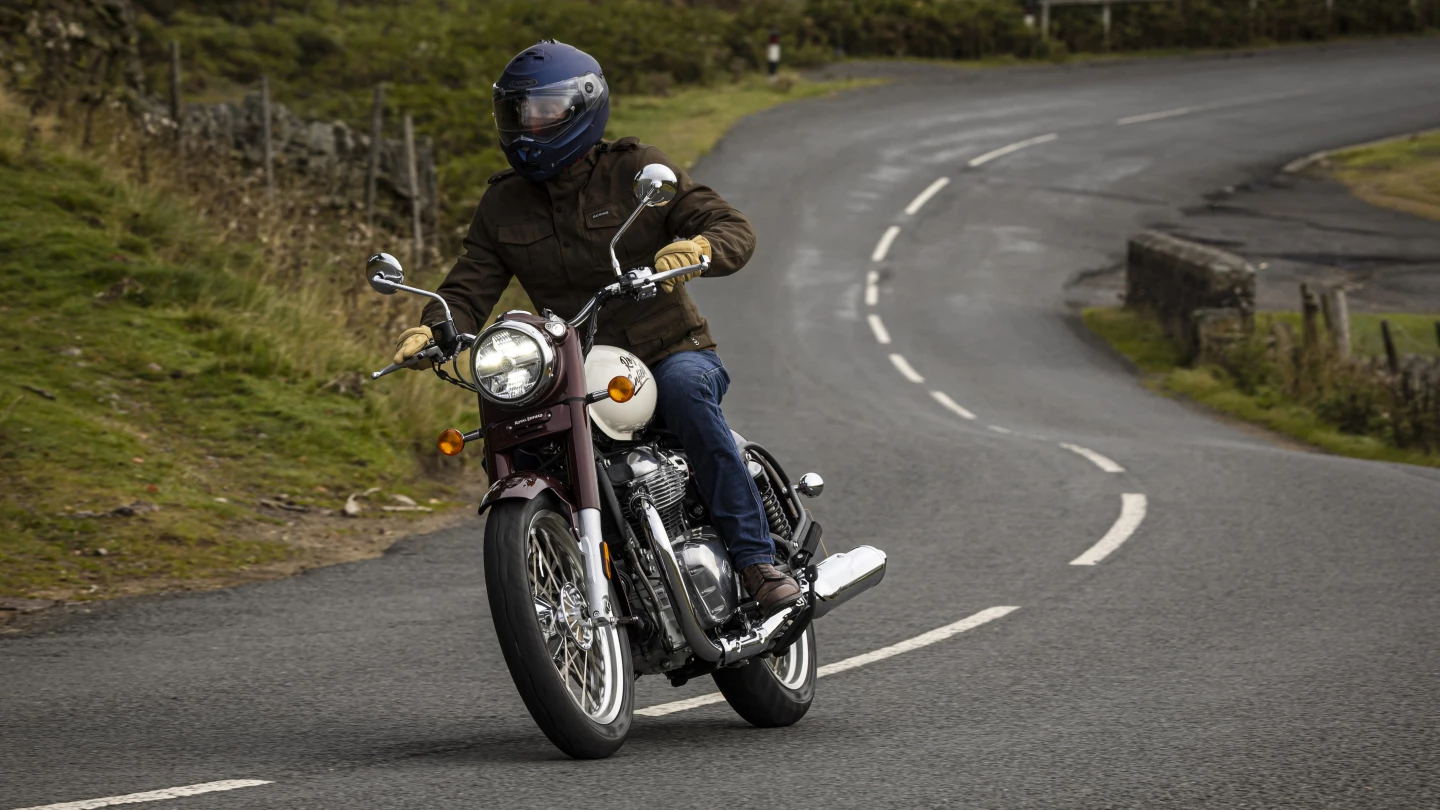
The Classic 650 is priced at the top of Royal Enfield's range – UK£6,499 in Britain, which equates to around US$8,430, although pricing and availability for the USA hasn't yet been announced. If you look really, really closely, you'll spot a few cost savings. There are some bolts that may not be as shiny a decade from now. The plastic dials on the adjustable brake and clutch levers will probably need to be replaced sooner than later.
But on the whole, the only explanation for this thing is witchcraft. Royal Enfield is the fairy godmother of motorcycling. It has waved its wand over a mid-sized standard motorcycle, whispered, "Bippity boppity boo," and presented us with something wonderful to take to the Distinguished Gentleman's Ride ball. Except this bike won't turn into a pumpkin after midnight.
A bike with a story
The Classic 650 is not, as it turns out, all that classic. Royal Enfield proudly traces its motorcycling history back to 1901, when the brand was British and operating out of Redditch, England. The styling of the Classic 650 is inspired by models from the 1930s and 40s, but it was designed long after that.
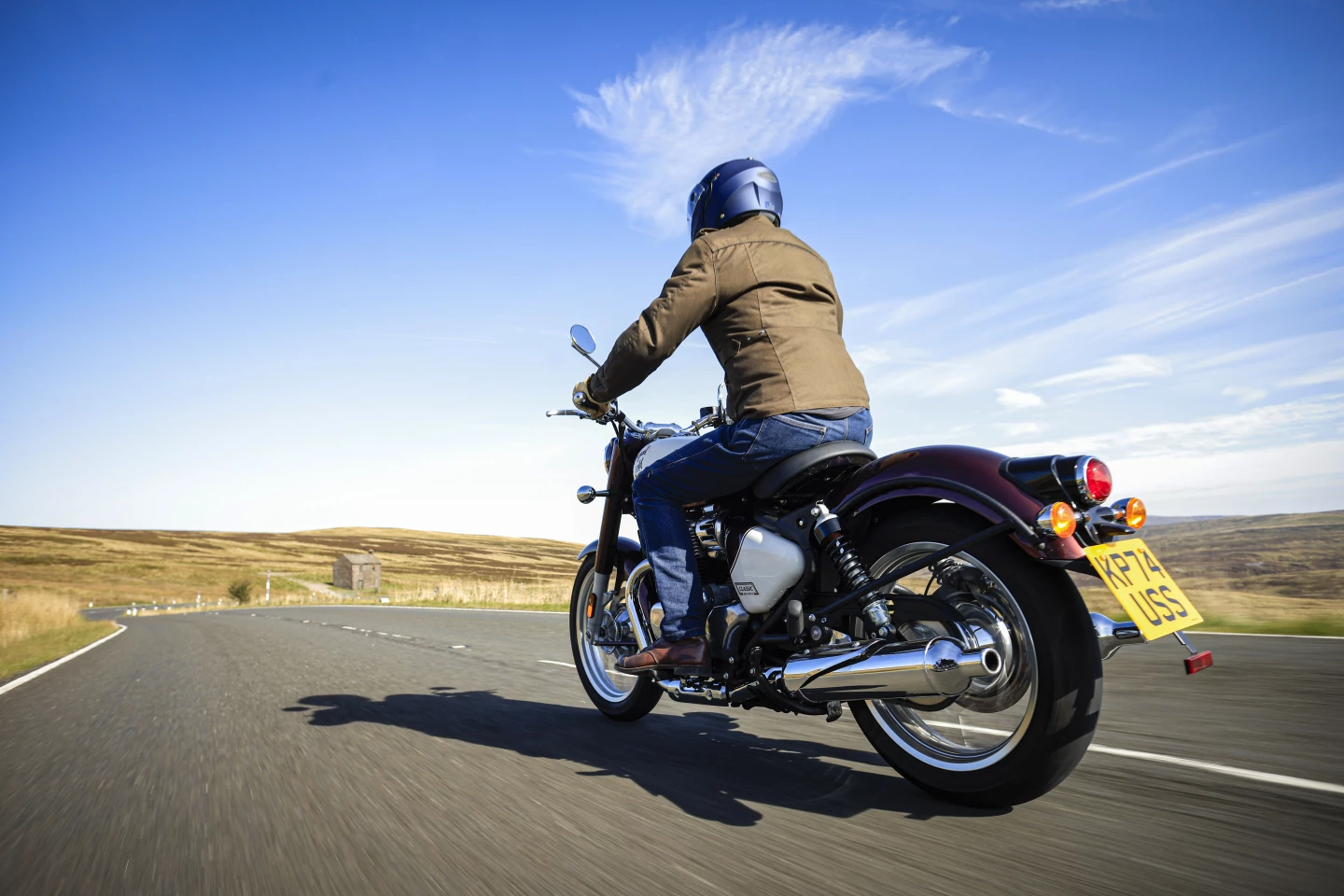
In the 1950s, Royal Enfield's operations moved to India. Not too long after that, it became an all-Indian affair, and spent several decades producing, more or less, the same bike over and over again. Famously, a Bullet 500 made in 1955 could be fixed with parts from one made in 1995, and vice versa. Royal Enfield became an institution in India – and a historical footnote pretty much everywhere else.
In the 90s, however, Royal Enfield was bought out by Eicher - another Indian company with roots that trace back to Europe (Germany, in this case) - and things began to turn around. A decade later, with its financial ducks now in a row and quality rapidly improving, the company was on the verge of launching a new (though not hugely different) engine: a fuel-injected 500cc single.
To showcase this new engine and new direction, the company wanted a model that spoke to its history and roots. To do so, it turned to a design company run by Mark Wells, based in Newcastle, England. Wells and his team came up with the Classic 500. Unveiled in 2008, it quickly became a popular model - inspiring the Classic 350 model a few years later.
In 2010, Royal Enfield was producing 50,000 motorcycles a year. Half a decade later, it was producing that same amount every month. Last year, the company sold roughly 920,000 bikes worldwide. Things are going well; these beautiful, relaxed, unintimidating, simple, affordable machines make a soothing antidote to so many of today's bikes, loaded to the gills with electronics and connectivity, all digital throttles, rider aids and screens that look like tablets.
Amid all this recent success, and with its 125th birthday just around the corner, the company decided it was time to modernize the Classic.

First impressions
After staring at the bike and flicking at its fenders for a while, you'll inevitably feel compelled to throw a leg over. A quick note about the saddle: all the pictures accompanying this article show the bike with a solo seat. Royal Enfield set the bike up like that at the press launch because it looks cool. But, in fact, when you buy the motorcycle it will also come with passenger accommodation - which can be quickly removed by undoing two bolts.
I can't speak to the passenger seating but certainly the wide solo seat is comfortable and suitable for as long a ride as you want to take on a naked bike. Or, at least as long a ride as its 14-liter tank will allow. Exactly how comfortable it is will depend somewhat on your physical dimensions. I am 186 cm tall, weighing 76.2 kg. You will notice from photos that I'm a little cramped on this motorcycle. Not unpleasantly so, but I definitely wouldn't want to be any taller or broader.
The controls... Well, they're where they ought to be when I go for them, and the seating position is so upright that it would meet your grandmother's expectations at the dinner table. The view before you is uncluttered. Dials and screens embedded into the Classic 650's old-school headlight nacelle are few and unobtrusive: an analogue speedometer, a tiny digital read-out that offers basic info (eg, fuel gauge, odometer), and an easily-ignored Tripper device that can pair with your phone and provide navigation.
The bike is far more manageable than its 536 lb (243 kg) wet weight would lead you to believe. I only learned of the bike's weight after riding it and was genuinely surprised to see that it is so heavy. It really does not feel that way.
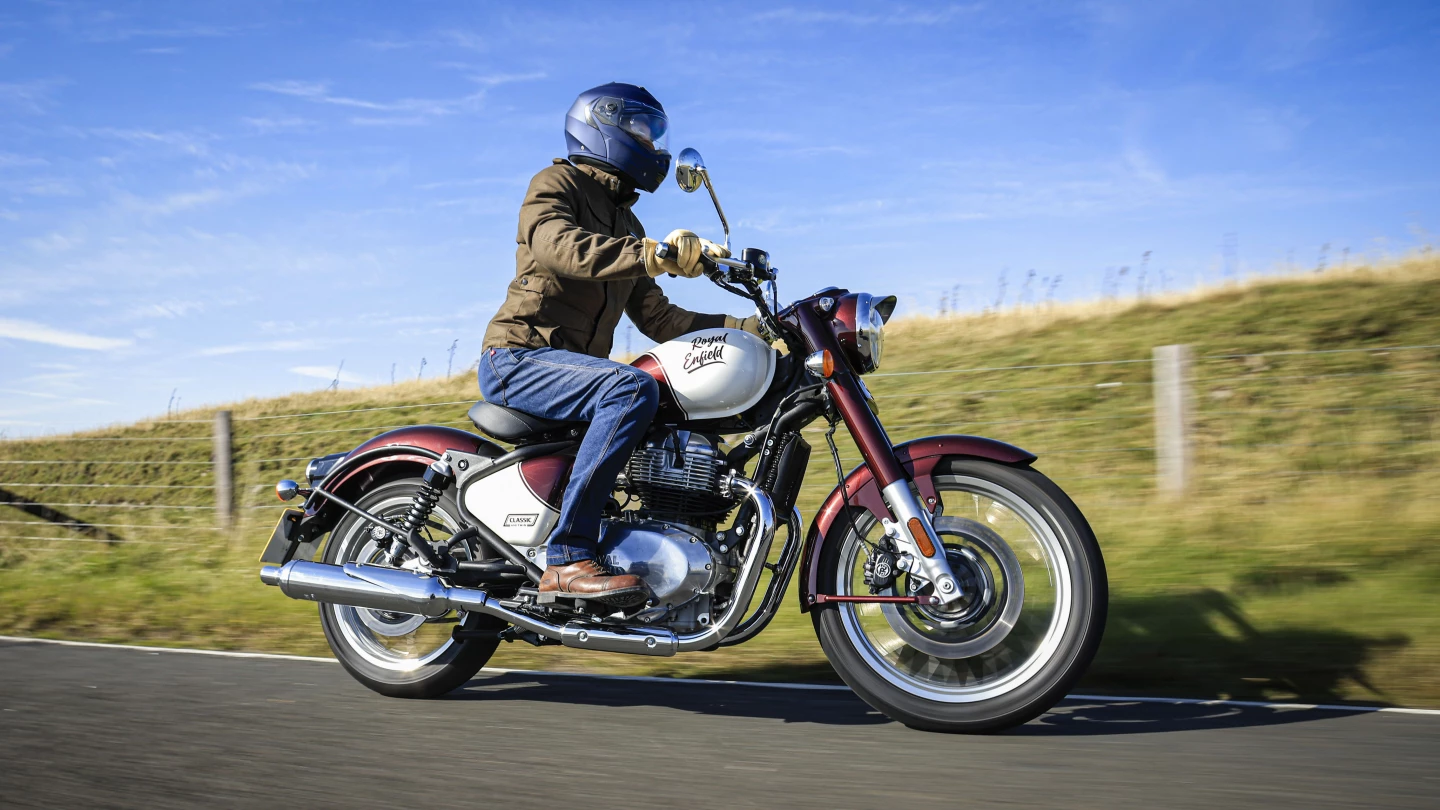
The engine
Turn the key and the Classic 650's tried-and-true twin thrums to life with ease. The sound of the engine is just a little quiet when you're sitting on top of it, but it actually sounds amazing from a distance.
At multiple points on the press ride, another journalist would fire up their bike in front of me or next to me, and my emotional response would be: "Oooooh, I wish the bike I'm on sounded like that!"
But, of course, it did; I just couldn't perceive it from where I was sitting. Blame the old-school pipes, I suppose, which may direct sound away from the rider.
Confident in the knowledge that you'll sound totally awesome doing so, the engine's smooth power delivery encourages you to explore the full of the bike's 46.4 horsepower (34.6 kW) power output and 38.6 lb-ft (52.3 Nm) of torque. Those aren't exactly Ducati Panigale numbers, of course, but within the context of an affordable, classically-styled motorcycle aimed at delivering old-school sunny-day feels, they're right about what the doctor ordered.
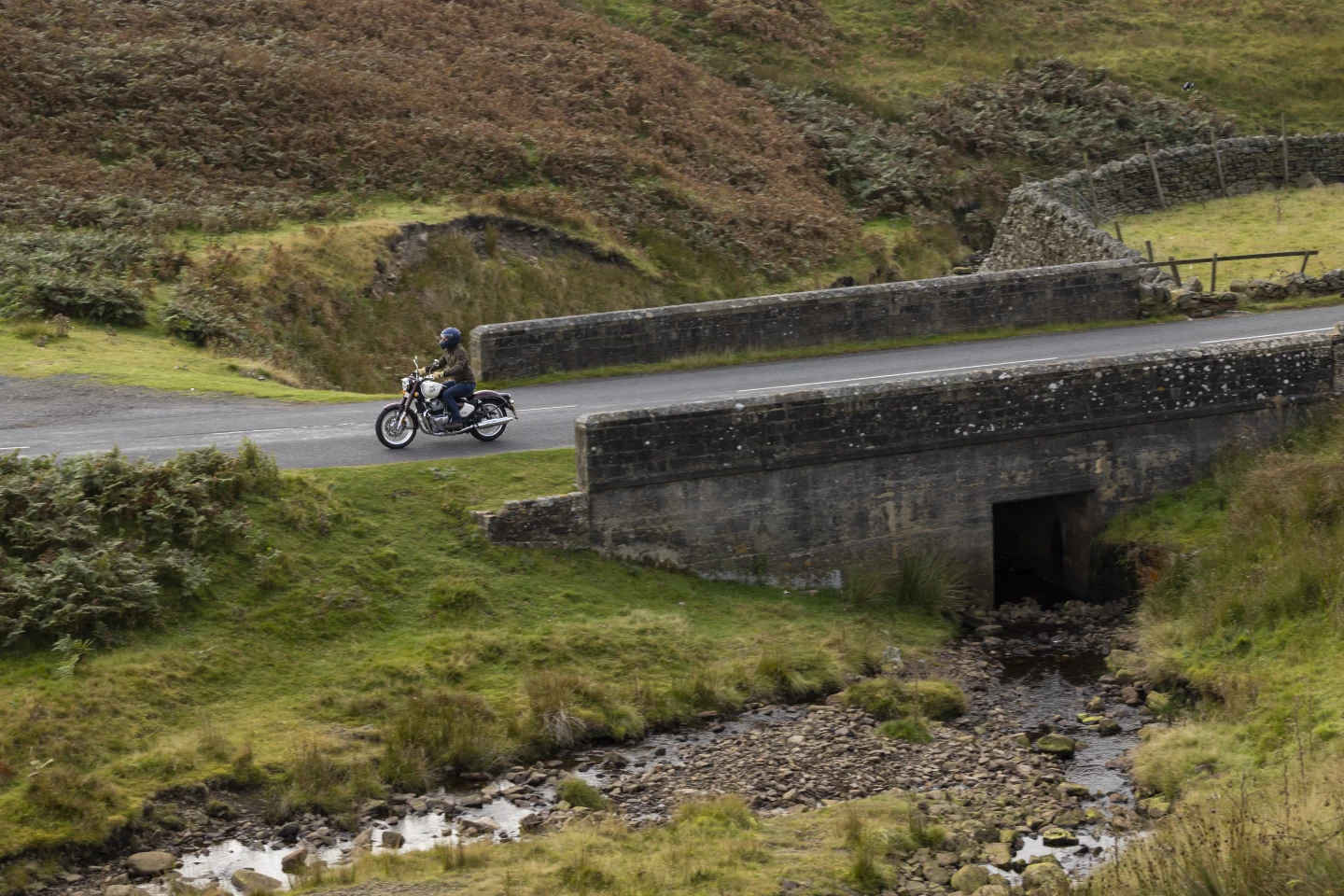
I'm confident that the overwhelming majority of people who buy this motorcycle will never find it wanting for power. But, that said, I'll admit that if you are really making progress (ie, riding in such a way that will definitely earn you a license ban), you'll find the engine runs out of puff more quickly than you'd like.
Trying to keep up with the aforementioned Mark Wells (who is now chief of design at Royal Enfield and played a key role in the development of the Classic 650) as we tore through Northern England's North Pennines, I found myself constantly banging up against the rev limiter in first, second, and third gears.
At real-world motorway speeds (ie, above 75 mph / 120 km/h), engine vibration was noticeable and on the verge of being unpleasant. The engine felt perfectly capable of cruising all day at such a speed, but it's probably not something you'd enjoy for long.
And although the Classic 650 isn't actually a British twin, it is very much built in the spirit of those storied machines. So, I felt obliged to test its ability to "do the ton." With the throttle pinned to the stop, and me screaming encouragement, it came very close, but never actually hit (or surpassed) the magic number.
Again: that's probably not relevant to the overwhelming majority of people who will buy this motorcycle.
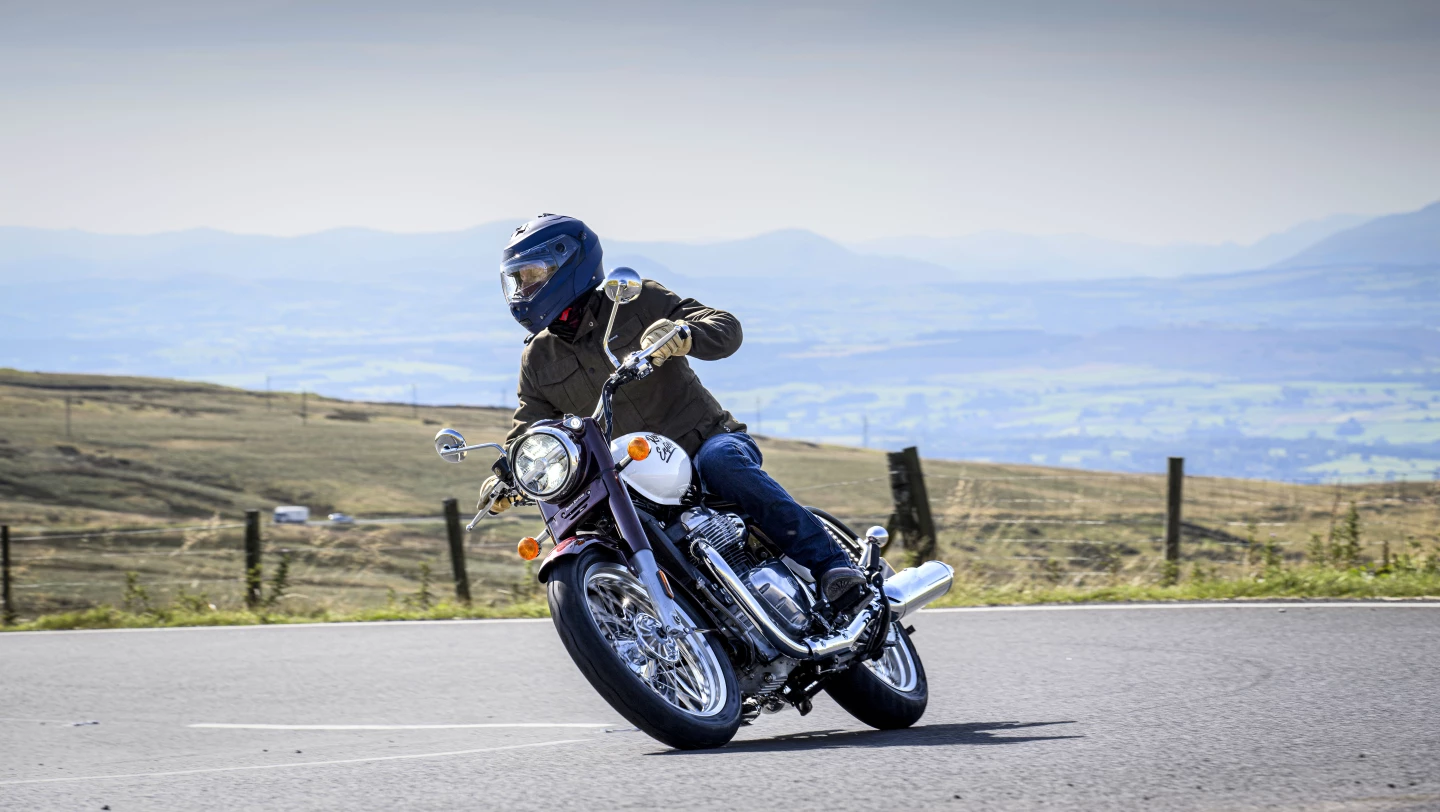
What it's like to ride
Equally irrelevant, I suspect, is the fact the chassis is not really designed for the aforementioned "making progress" style of riding. Attempt to throw this thing hard into a corner and it will shudder with displeasure. The suspension is non-adjustable. The tire sizing is old-school: 19-inch front, 18-inch rear.
Brakes are good, but not great. One fellow journalist observed that if he really jammed hard on the rear he could get it to lock up and drift the back end a little. That's cool if you're him - maybe - but probably not what most owners will want from a vehicle that is supposed to be ABS-equipped.
But once again, these are observations made by moto-journalists. Moto-journalists are not normal people. Incredibly likable people, yes, but not normal people. No normal person would look at a Classic 650 and think: "I'm gonna get my knee down on this thing."

Especially not a normal person who is spending their own money on this bike. A normal person is going to ride this motorcycle more or less within the parameters of the law. And in that context, the bike handles brilliantly. It feels much lighter than it is, and corners with nimble ease. In urban situations and on lazy backroads, it's the kind of bike that makes you happy, makes you feel good about life. It's the kind of bike that you want to be seen riding.
The Classic 650 is very much styled to evoke nostalgia for the heyday of British twins, but a 270° firing order means you get something closer to the V-twin experience. And that's probably the best way to think of this bike: not unlike a modern Triumph Bonneville T100, it feels like a lighter, more manageable cruiser with (a little bit) more cornering clearance and less of a stretch to the pegs.
Worth the money
The drawback of having a bike this pretty is that you will feel compelled to clean it far more often and more meticulously than you would, say, a Suzuki V-Strom 650. So, the Classic 650 loses just a little of its price tag charm when you factor in the additional cost of cleaning products.
Within this new, more dedicated cleaning regime, you will probably discover what I'd consider the most annoying aspect of this motorcycle: where Royal Enfield has chosen to put the exhausts. Specifically, the left exhaust, which sits in such a way that it prohibits easy access to the chain. If you want to clean and lube and adjust the chain in an attentive manner befitting the look of this bike, you will have to remove said exhaust.
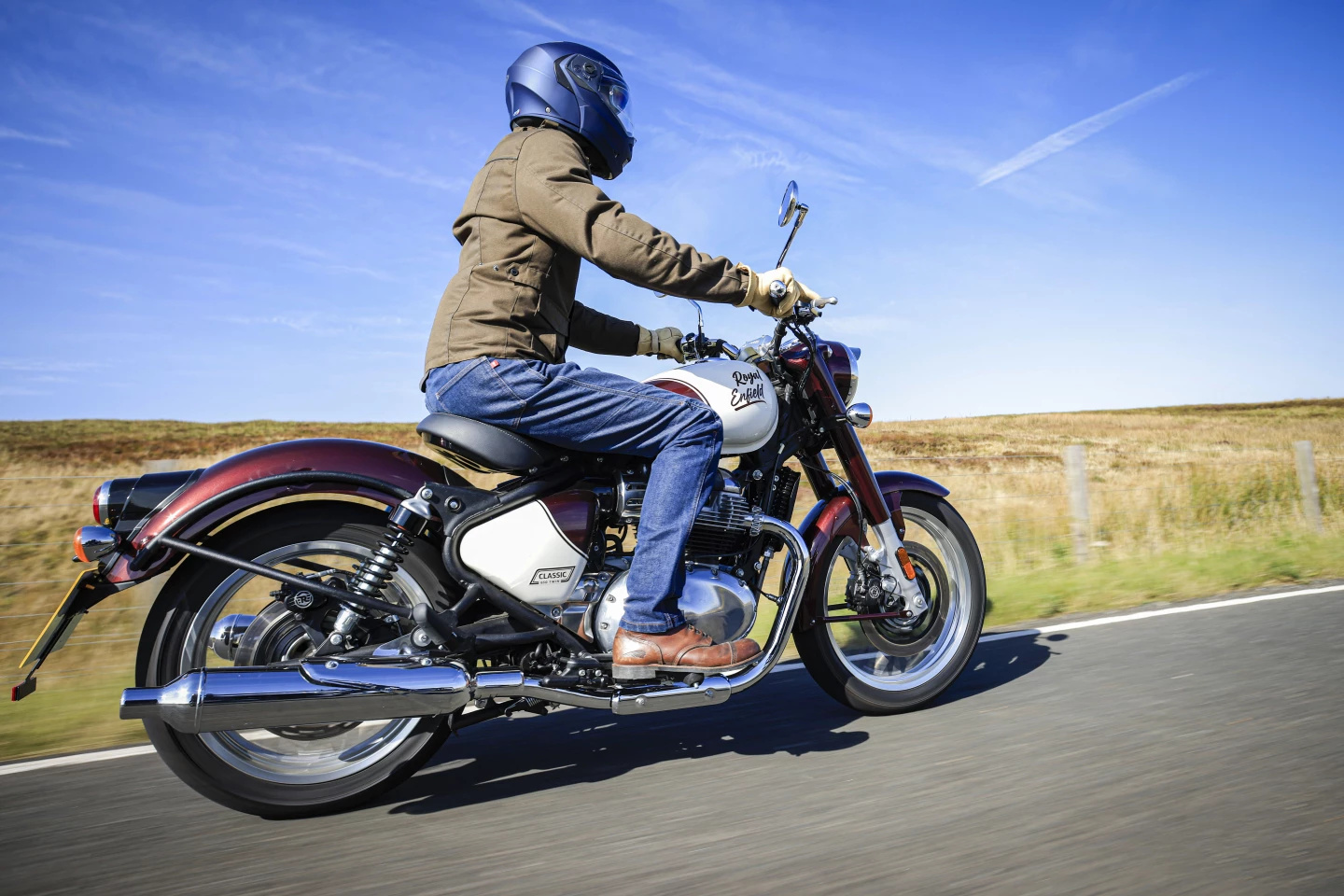
It's not a hard job; you simply loosen two bolts - one that's easy to access and one that's a little bit less so - and gently wiggle the exhaust free. But I can tell you from personal experience - having previously owned a Triumph Bonneville T120, which has the same quirk - that when you have to do it over and over and over and over again, it makes you angry.
If I owned a Classic 650, it would almost certainly end with Mark Wells blocking all my messages to him, lamenting: "COULD YOU NOT HAVE PUT THAT THING ONE INCH HIGHER OR ONE INCH LOWER?!"
But, in the grand scheme of things, this is a very petty complaint. The fact that it's my primary gripe about the Classic 650 is a testament to my high opinion of this motorcycle. Affordable, beautiful, and fun to ride (within its context), it strikes me as a motorcycle that is very much worth its asking price. Royal Enfield has worked its magic once again.
Source: Royal Enfield
















